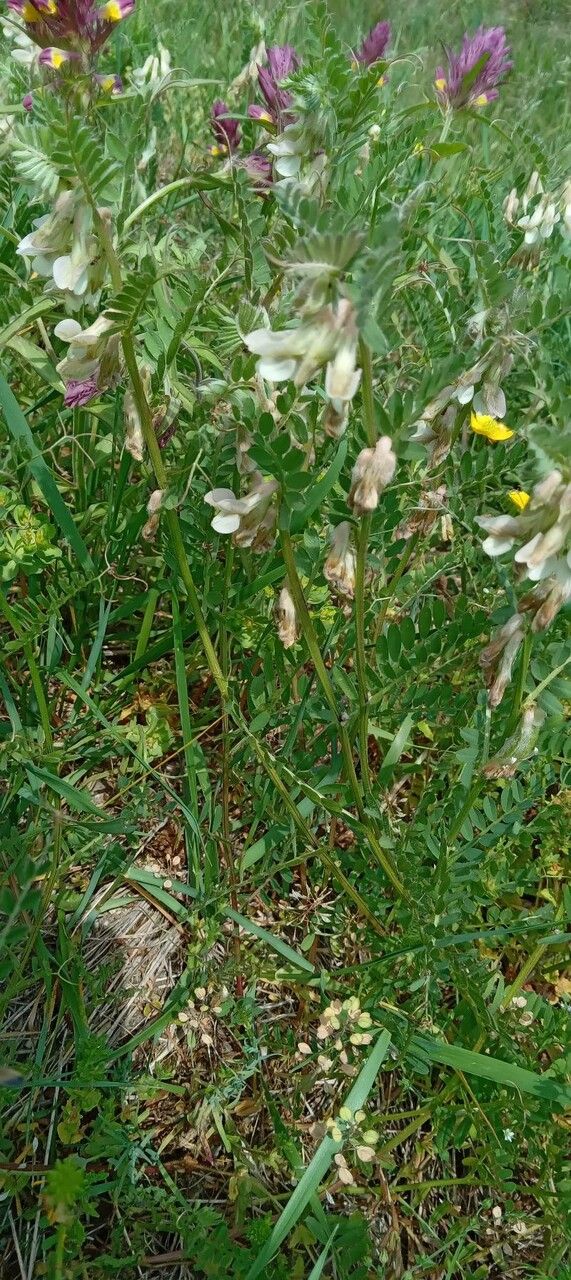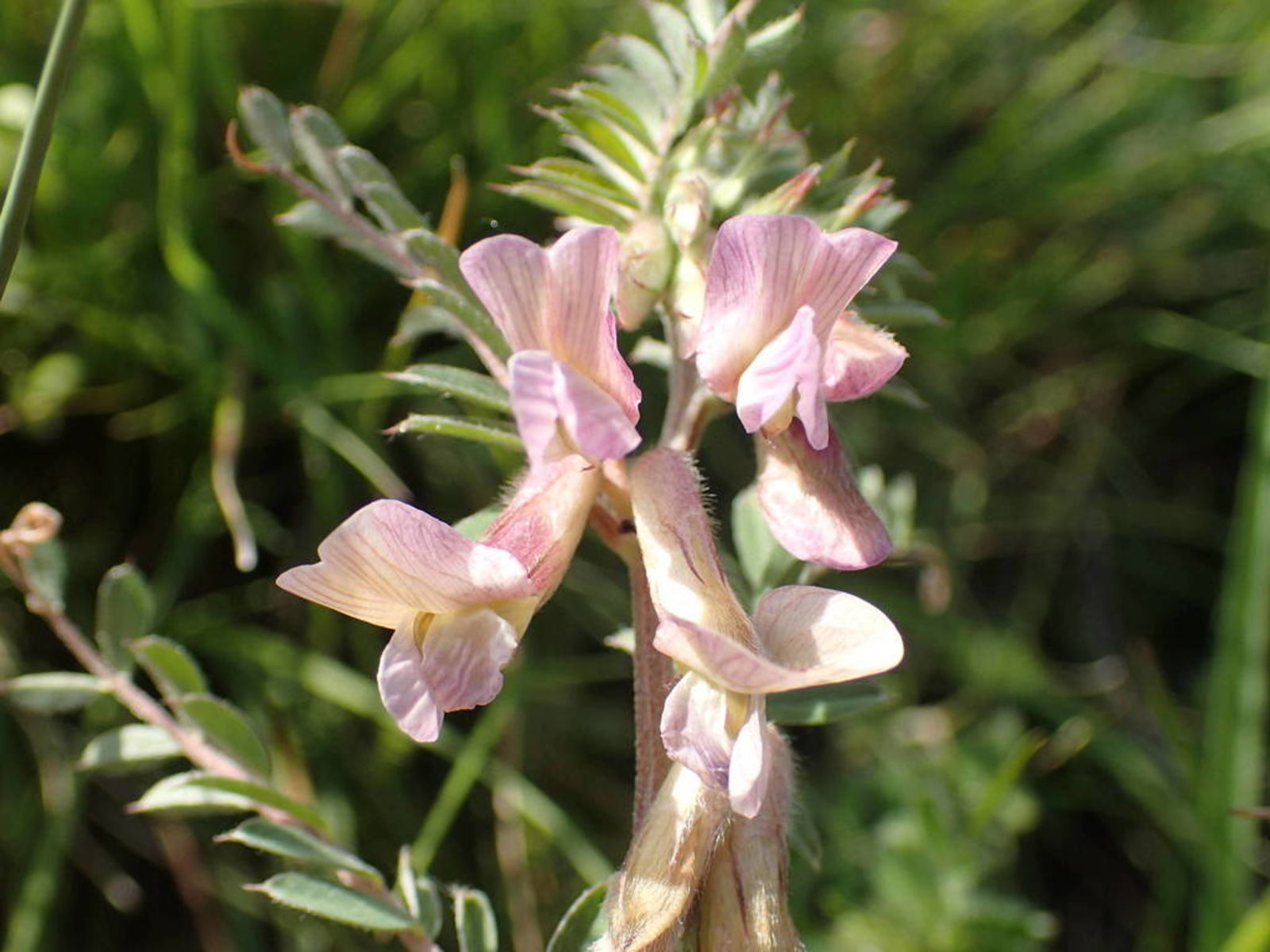Hungarian vetch
vicia pannonica
Also known as: ["Hungarian bitter vetch","Hungarian vetchling"]
Overview
A hardy annual legume native to Central Europe, valued for its nitrogen-fixing properties and use as forage or cover crop.
Benefits & Perks
["disease resistant","edible fruits","medicinal use","wildlife attractant (bees, butterflies, birds)","drought tolerant"]
Botanical Classification
| Phylum: | Magnoliophyta |
| Class: | Magnoliopsida |
| Order: | Fabales |
| Family: | Fabaceae |
| Genus: | Vicia |
| Botanical Name: | Vicia pannonica |
Plant Characteristics
Basic Information
- Category: Herbs & Weeds
- Suitable Location: garden bed or container in a sunny to partially shaded area
- Suitable For:
- Is Weed: No
- Allergenicity: low
Environmental Needs
- Climate: {"temperatureRange":"5–30°C"}
- Hardiness: {"zones":"4–8"}
- Misting: rarely required
- Drainage: Well-draining to moderately draining; avoid waterlogged conditions.
- Soil Type: Well-draining loamy soil with added organic matter; tolerates poor soils but benefits from compost.
Maintenance Level
- Maintenance Level: low
- Toughness Level: high
- Pruning Frequency: As needed; lightly prune after flowering or seed harvest to encourage new growth.
- Pruning Intensity: Light to moderate; avoid heavy pruning as it can reduce pod production.
Care Details
Ideal Sunlight Coverage:
Full sun (6–8 hours of direct sunlight per day); tolerates partial shade but may produce fewer pods.
Sunlight Tolerance Tips:
Acclimate plants gradually if moving from shade to sun; protect from intense midday sun in hot climates; ensure good air circulation to prevent fungal issues.
Care Requirements
Care Difficulty
easyeasy
Sunlight
full sun to partial shade
Rotate plants for even growth; use shade cloth in extreme heat; avoid placing in drafty areas.
Watering
every 7–10 days during active growth, reduce in winter
Water thoroughly but infrequently; ensure proper drainage; avoid wetting foliage to prevent fungal issues.
Soil
well-drained, loamy soil with moderate organic matter
pH: Slightly acidic to neutral (pH 6.0–7.0).
Ensure good drainage; amend with organic matter; avoid compacted soil.
Temperature
Prefers cool to moderate temperatures (60–75°F or 15–24°C); can tolerate cooler nights but avoid frost.
Avoid sudden temperature fluctuations; protect from frost; ensure good air circulation in hot weather.
Fertilizing
every 4–6 weeks during growing season
Fertilize sparingly; apply during active growth; use organic options like compost or aged manure.
Propagation
Methods
Seeds (direct sowing or indoor starting); can also be propagated by root cuttings in early spring.
Step-by-Step Propagation Guide
- Prepare medium.
- Sow seeds 1/2 inch deep.
- Keep moist.
- Thin seedlings to 6–12 inches apart.
- Transplant outdoors after hardening off.
Best Time: Spring, after the last frost; indoor starting can begin 4–6 weeks before the last frost date.
Environment
Warm (65–75°F or 18–24°C), bright but indirect light; keep soil consistently moist but not waterlogged.
Medium
Well-draining seed starting mix or garden soil; can be sown directly in the garden.
Hormone
Not required for seeds; rooting hormone may help if using root cuttings.
Timeline
Seeds germinate in 7–14 days; plants reach maturity in 60–90 days; root cuttings take 4–6 weeks to root.
Tools Needed
Seed trays, soil, water, labels, garden trowel.
Quick Tips
Sow seeds thickly as germination can be uneven; thin seedlings early to prevent overcrowding; harden off seedlings before transplanting.
Pruning & Repotting
Pruning Guide
Method
Snip off dead or yellowing stems at the base; trim back overgrown branches to maintain shape.
Pruning Plan
Minimal pruning needed; focus on removing dead or damaged stems and tidying up after flowering or harvest.
Tools
Hand pruners, scissors, or a sharp knife.
Checklist
Remove dead/damaged stems; trim back overgrowth; clean tools between cuts; dispose of pruned material.
Repotting Guide
Best Season
Early spring, before active growth begins.
Pot Size
One size larger pot (e.g., from 4-inch to 6-inch); ensure good drainage holes.
Method
Gently remove the plant from its container; loosen roots if pot-bound; place in a new pot with fresh soil; water thoroughly.
Suggestions
Not typically repotted as it is usually grown as an annual in the garden; if grown in containers, repot annually in early spring.
Checklist
Choose appropriate pot size; use fresh soil; handle roots gently; water after repotting; place in suitable light.
Advanced Care Tips
Watering Mastery
Watering Checklist
Check soil moisture before watering; water deeply; ensure drainage; avoid wetting leaves.
How to Apply Water Properly
Water directly at the base of the plant, ensuring moisture reaches the root zone; allow excess water to drain away; water early in the morning to minimize evaporation and fungal growth.
Watering Schedule Tips
Water deeply once the top inch of soil feels dry; reduce frequency in winter to prevent root rot.
Soil Improvement
Add compost or well-rotted manure; incorporate perlite or sand for drainage; avoid heavy clay soils.
Temperature Stress Management
Signs of Temperature Issues
Wilting, yellowing leaves, stunted growth, or flower/seed pod abortion in extreme heat or cold.
Cold Stress
Low temperatures slow growth and can damage developing pods; frost can kill young plants or reduce yield.
Solution: Plant in a sheltered location; use row covers or cloches in late autumn or early spring; avoid planting in low-lying frost pockets.
Hot Stress
Excessive heat can cause flowers to drop, reduce pod set, and stress the plant, leading to poor growth.
Solution: Provide afternoon shade; increase watering frequency; use mulch to keep roots cool and retain moisture.
Fertilizing Guide
Fertilizing Checklist
Use balanced fertilizer; apply at planting; side-dress mid-season if needed; avoid excess nitrogen.
Fertilizing Method
Use a balanced, slow-release fertilizer at planting time; side-dress with compost or a nitrogen-rich fertilizer mid-season if needed; avoid over-fertilizing to prevent leggy growth.
Common Problems & Solutions
Toxicity Warning
Cats
Slightly ToxicCats are sensitive to the lectins and other compounds in Vicia pannonica seeds, which can cause gastrointestinal upset. The effects are generally mild but can be more pronounced in smaller or sensitive individuals.
⚠️ Symptoms:
🌿 Toxic Parts:
⚡ Toxic If:
if eaten
Dogs
Slightly ToxicIn dogs, ingestion of Vicia pannonica seeds can lead to gastrointestinal irritation due to the presence of lectins and other antinutritional compounds. While not highly toxic, it can cause discomfort and digestive issues.
⚠️ Symptoms:
🌿 Toxic Parts:
⚡ Toxic If:
if eaten
Humans
Slightly ToxicVicia pannonica, commonly known as Hungarian bitter vetch, contains lectins and other compounds that can cause gastrointestinal distress if consumed in large quantities. The lectins interfere with nutrient absorption and can lead to digestive upset.
⚠️ Symptoms:
🌿 Toxic Parts:
⚡ Toxic If:
if eaten
Frequently Asked Questions
Q: Is Vicia pannonica edible?
A: Yes, the seeds are edible when properly prepared, but caution is advised due to mild toxicity.
Q: Does Vicia pannonica attract wildlife?
A: Yes, it attracts bees, butterflies, and birds due to its flowers and seeds.
Q: Is Vicia pannonica suitable for beginners?
A: Yes, it is easy to grow and requires minimal maintenance.
Quick Reference
| Family: | Fabaceae |
| Care: | easy |
| Light: | full sun to partial shade |
| Water: | every 7–10 days during activ |
Get Expert Care Tips
Download the Plantious app for personalized care reminders and plant identification!
Google Play App Store








